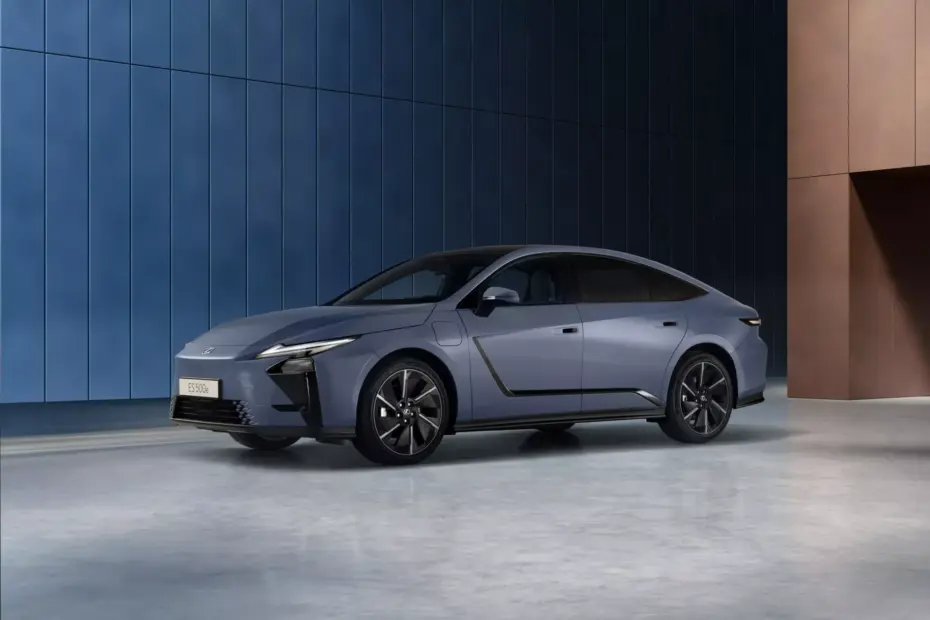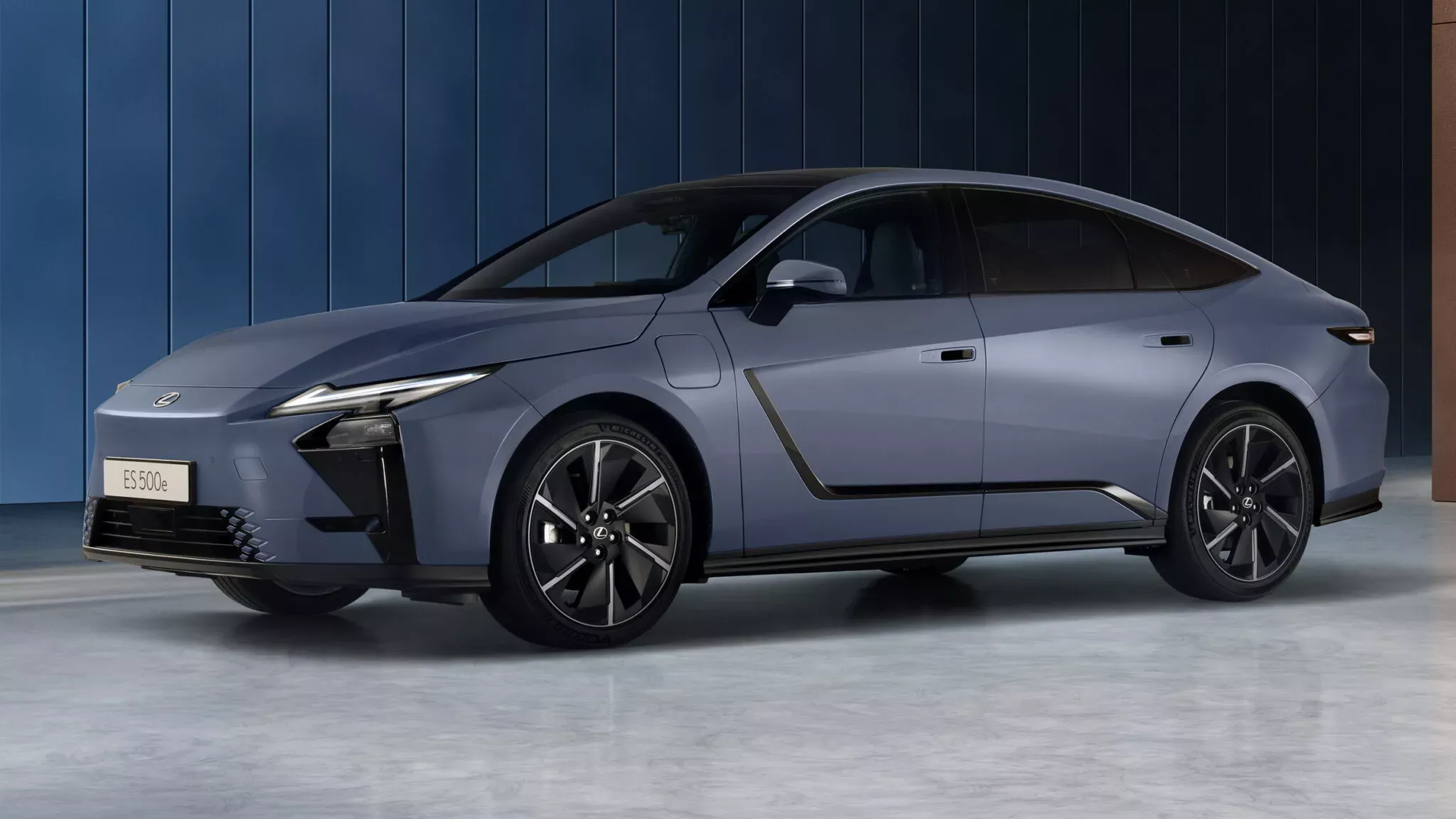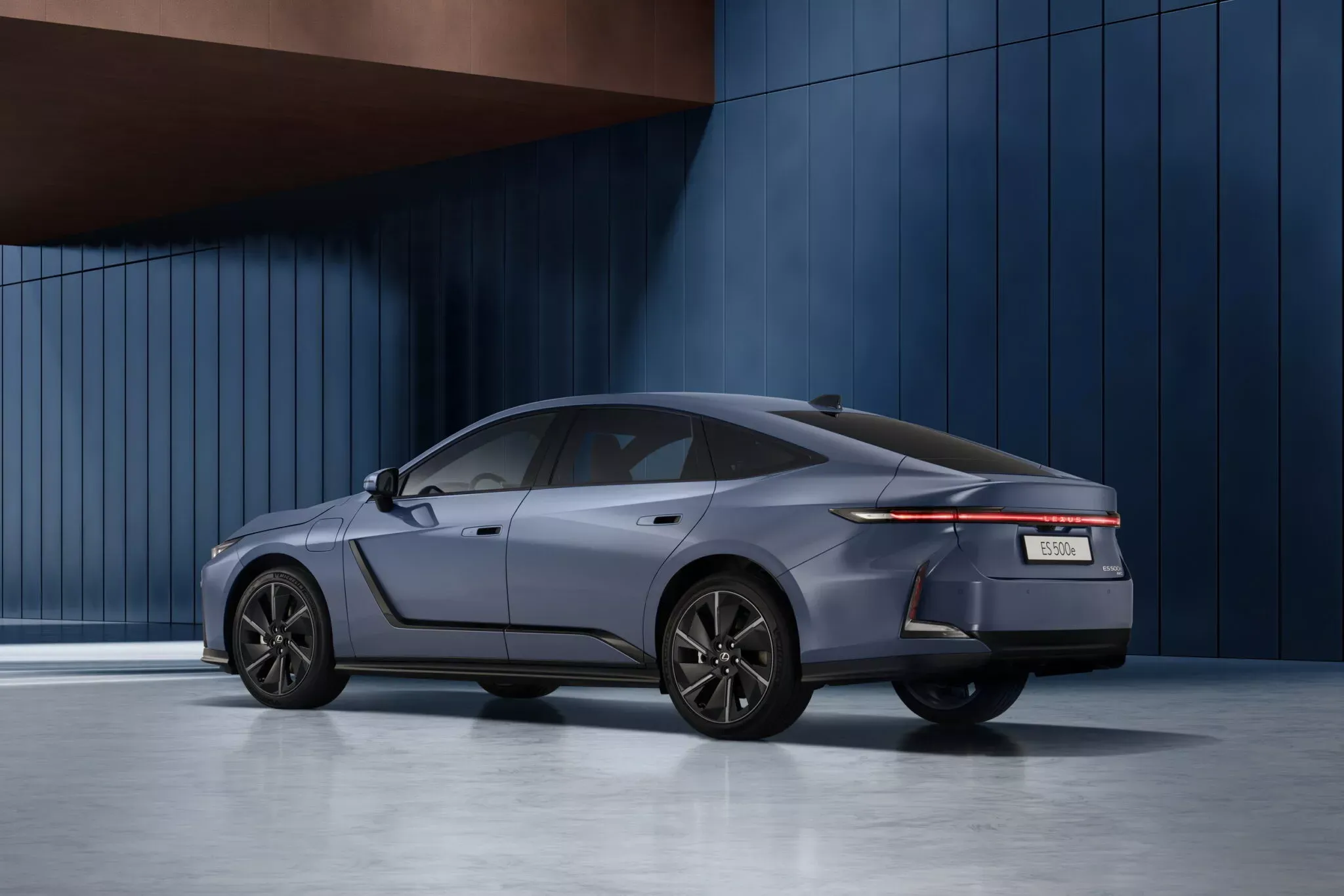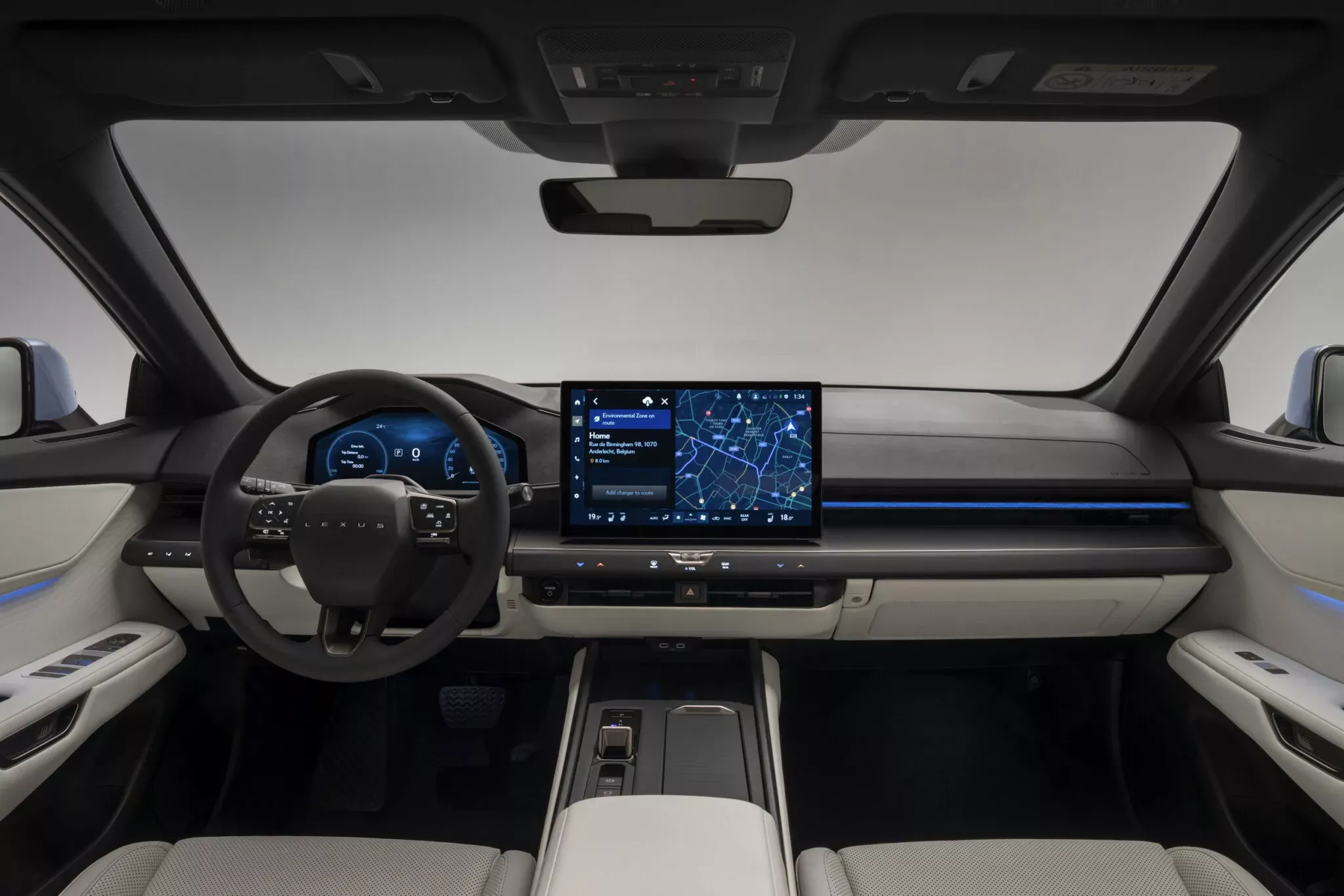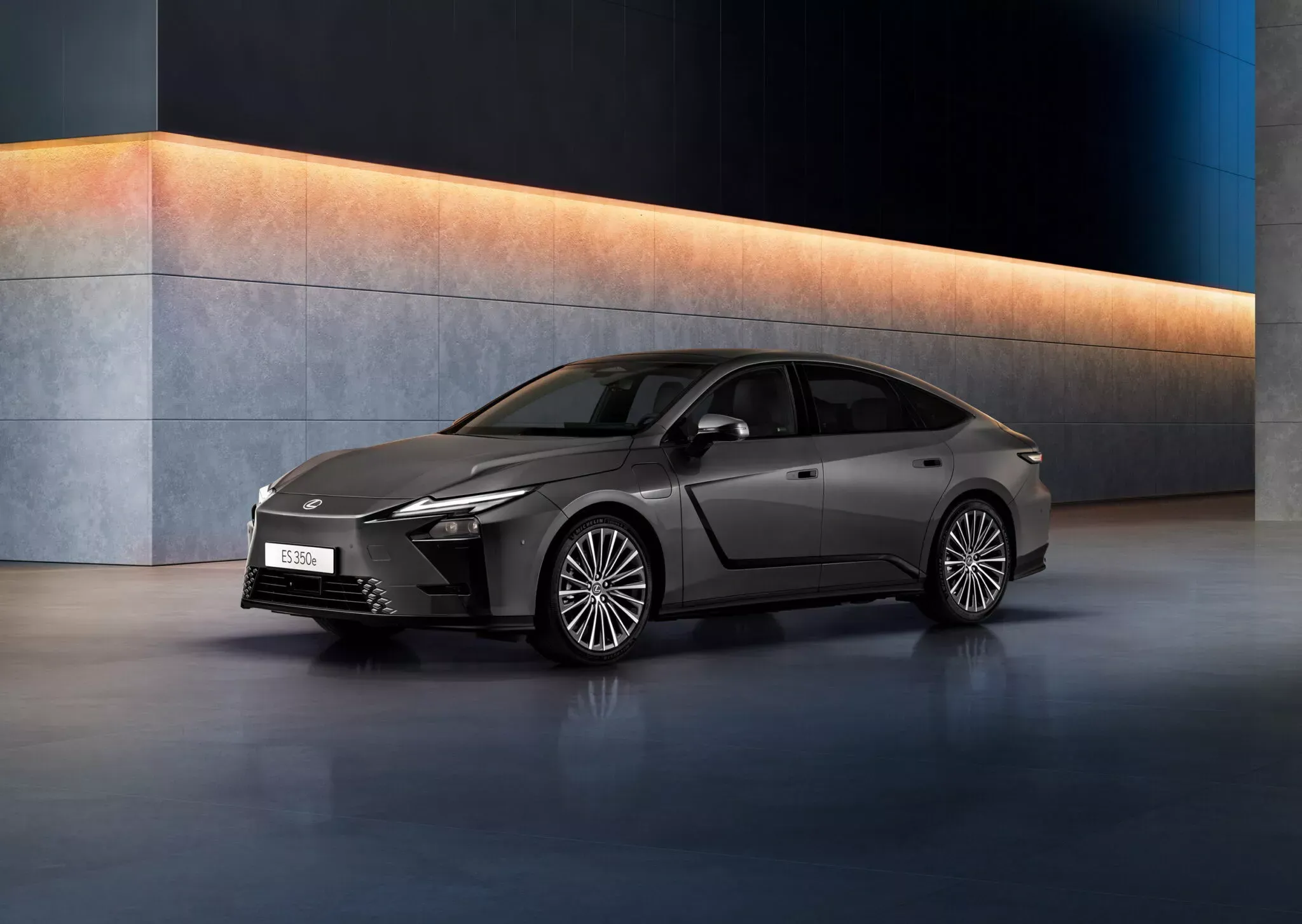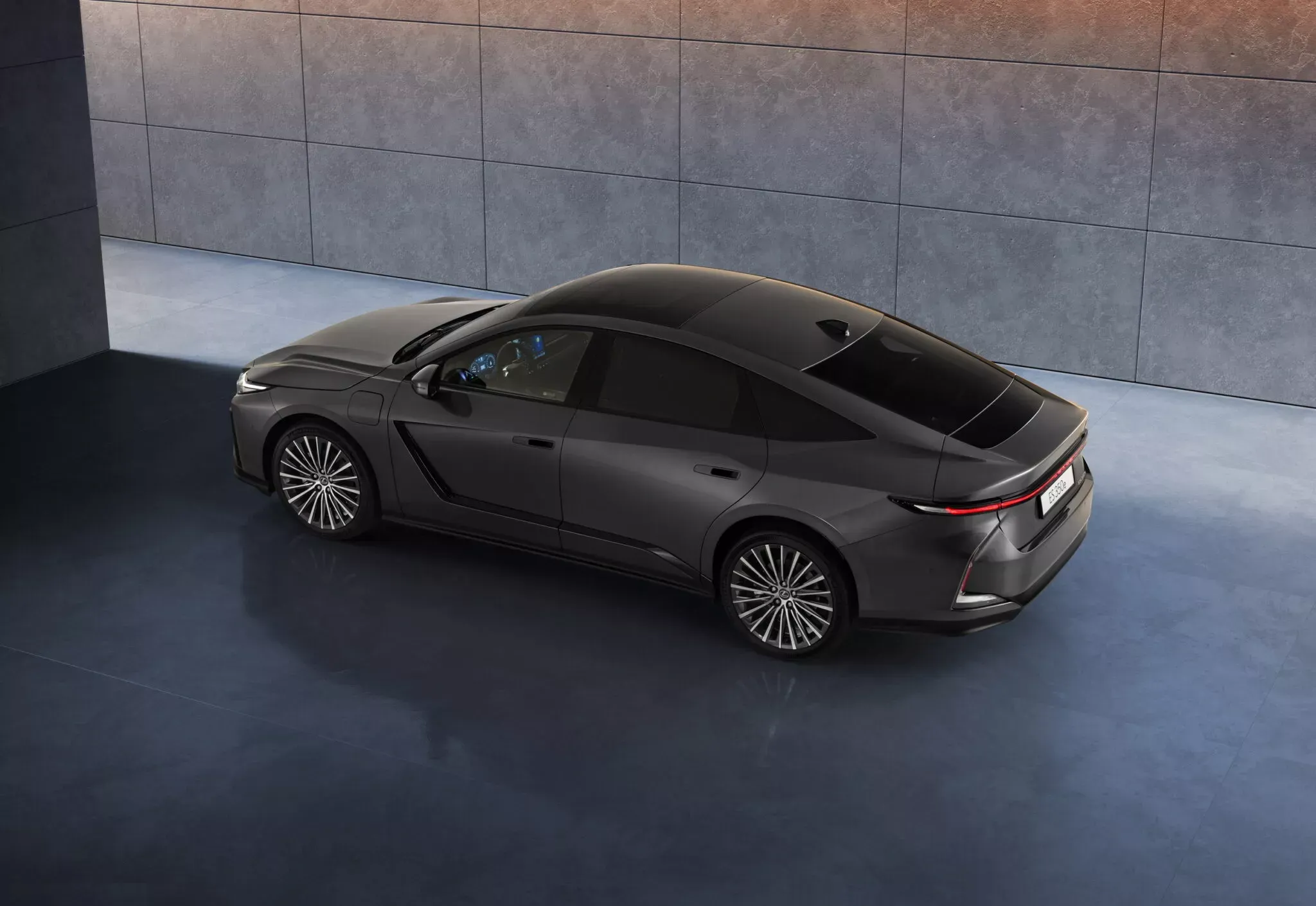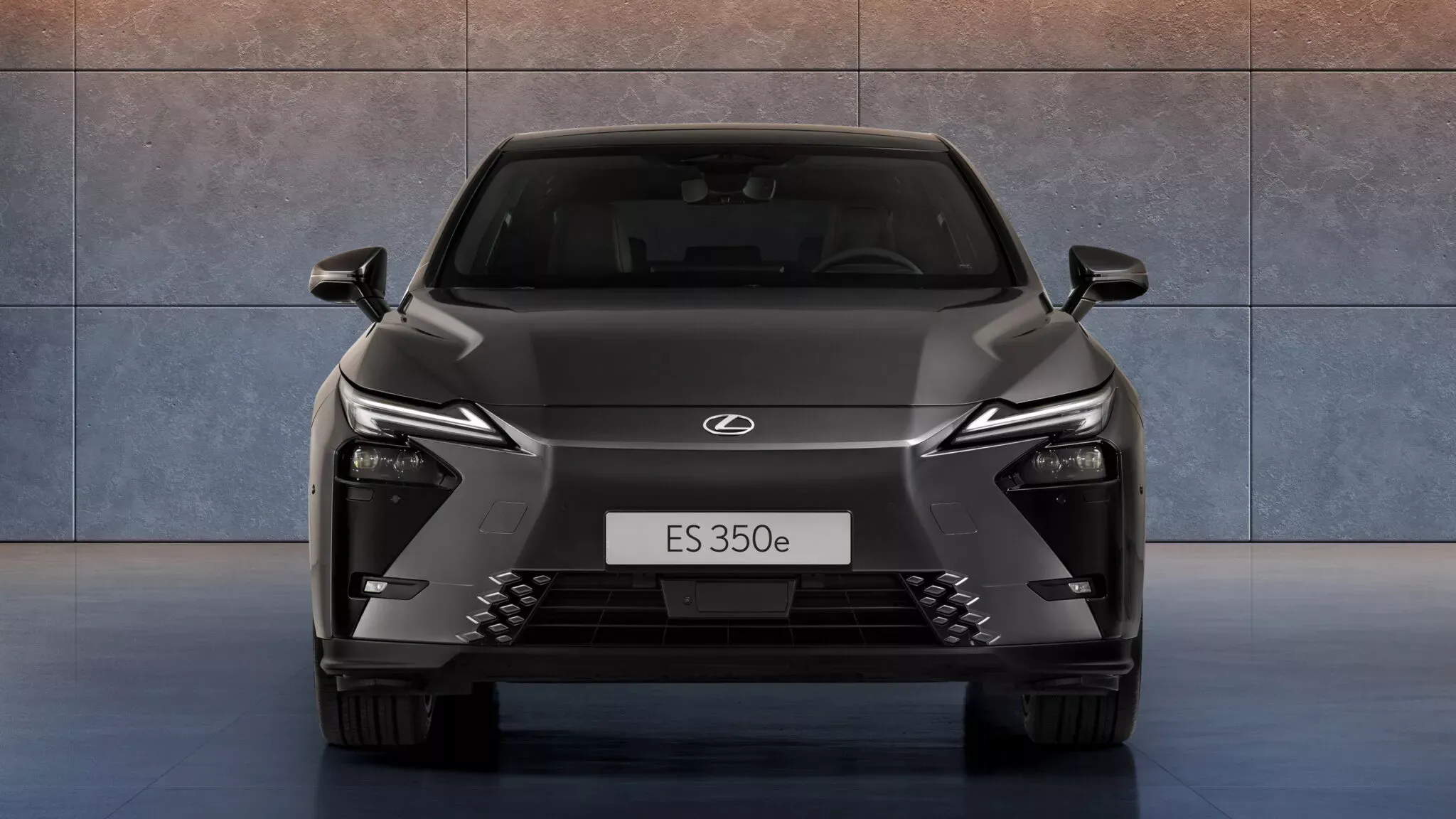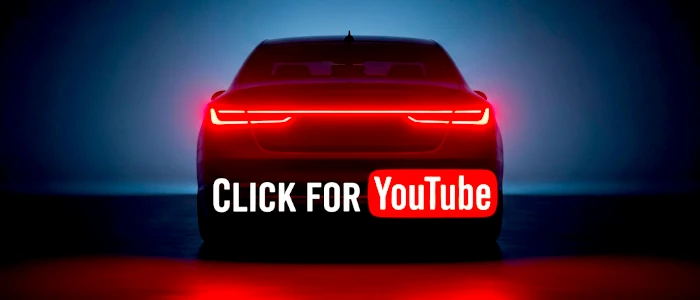Get ready to witness a revolution in the luxury sedan segment. The 2026 Lexus ES Sedan is not just a new generation; it’s Lexus’s manifesto for the future, combining timeless elegance with a bold leap into electrification. This is the car that promises to redefine what we expect from a premium vehicle.
Unveiled to great anticipation at the Shanghai Auto Show in April 2025, the eighth generation of the iconic sedan, with us since 1989, arrives to provoke and delight. But does it really deliver on all its promises?
What’s the Big Leap for the 2026 Lexus ES Towards Electrification?
Lexus has taken a giant step with the 2026 ES, introducing fully electric versions (BEV) for the first time alongside the already renowned hybrids (HEV). It’s a clear response to the growing demand for more sustainable and efficient vehicles without sacrificing the luxury and performance the brand represents.
This transition is driven by the TNGA GA-K platform, now optimized to accommodate both hybrid and electric systems. It’s a bold but necessary move that perfectly aligns with Toyota’s future vision, as seen in models like the 2026 Lexus RZ, which already expertly explores the electric frontier.
What Makes the New ES Design So Captivating and Controversial?
The design of the 2026 Lexus ES is undoubtedly one of its most talked about—and polarizing—features. The new “Clean Tech x Elegance” language, inspired by the LF-ZC concept, abandons the exaggerated and controversial spindle grille of previous generations, adopting sharper, minimalist lines, L-shaped headlights, and a three-dimensional rear. But why this duality?
For some, this change is a breath of fresh air, a sign of modernity, and an aesthetic advance. For others, it may feel like too big a break from tradition. Inside, the “Tazuna” concept stands out with intuitive controls and an interior finish that may include 3D-printed bamboo, an innovation that uniquely combines luxury and sustainability in a surprising way.
How Does Technology Define the Onboard Experience of the 2026 ES Sedan?
The foundation of the 2026 ES is enhanced to offer an unparalleled driving and comfort experience. Greater structural rigidity combined with a multilink rear suspension (replacing the previous setup) promises to absorb road imperfections like magic, delivering cabin silence that borders on unbelievable. But what really elevates the experience?
In the BEV versions, technology reaches its peak. The ES 500e, for example, comes with the DIRECT4 system, which manages torque distribution from 100:0 to 0:100 between the axles, ensuring traction and stability under any condition. In addition, DC fast charging lets the battery go from 10% to 80% in about 30 minutes, a relief for those worried about charging infrastructure, as noted by the Lexus Global Newsroom.
The Lexus Interface multimedia system, with its imposing 14-inch screen, is a showstopper. It supports split-screen, integrated navigation, and an enhanced voice assistant, plus Over-The-Air (OTA) updates that will keep the car always up to date. And how is safety reinvented? Lexus Safety System+ 4.0 is smarter than ever, with enhanced collision detection, adaptive cruise control, and even driver monitoring to detect signs of fatigue or cellphone use. It’s like having an invisible and incredibly attentive co-pilot.
What Versions and Prices Are Expected for the 2026 Lexus ES?
Lexus is planning a global launch for the 2026 ES, with sales expected by mid-2026 in strategic markets such as the USA, China, Japan, Europe (including France and Germany), Brazil, and the Middle East. For Russia and India, confirmation is still pending. But with so much innovation, does the price keep up?
Price estimates position the 2026 ES competitively in the luxury segment, though higher than the previous generation, especially for electric versions. It’s important to remember these figures are estimates and may vary based on taxes and specifications in each market. Just like the 2025 Lexus IS 500 Ultimate Edition, the 2026 ES promises to be an object of desire for those seeking exclusivity and technology.
Versions and Prices Table (Estimates)
- ES 350h (Hybrid): 243 hp, FWD/AWD. 0-60 mph acceleration in 7.2s (AWD). Estimated price: US$48,000 (USA). Ideal for those seeking efficiency without full electrification.
- ES 300h (Hybrid): 201 hp, FWD/AWD. 0-60 mph acceleration in 9.4s (estimated). Estimated price: US$45,000 (Brazil, R$225,000). Entry-level, more affordable version.
- ES 350e (Electric): 221 hp, FWD. Range up to 300 miles (19″ wheels). 0-60 mph acceleration in 8.9s. Estimated price: US$52,000 (USA). Efficient electric with good range.
- ES 500e (Electric): 338 hp, AWD. Range up to 250 miles (19″ wheels). 0-60 mph acceleration in 5.9s. Estimated price: US$56,000 (USA), US$60,000 (Brazil, R$300,000). Sporty performance with all-wheel drive.
How Does the 2026 Lexus ES Compare to Its Luxury Competitors?
The 2026 Lexus ES steps into a heavyweight ring, competing directly with titans like the BMW 5 Series (and its electric sibling, the i5) and the Mercedes-Benz E-Class (and the EQE). Does it have what it takes to dethrone the giants? While the Germans bet on dynamic performance and cutting-edge technology, the ES stands out in comfort, quietness, and a stronger focus on elegance and pure electrification.
Other competitors include the Audi A6 (and the e-tron GT electric), Genesis G80 (and the Electrified G80), and Volvo S90 (with the future ES90 electric). The ES positions itself with an attractive value proposition, offering a complete luxury and technology package at prices that may be more accessible than some European rivals. Toyota’s bet on full electrification, as seen in the 2026 RAV4, reflects Lexus’s serious commitment to this path.
Direct Comparison: 2026 ES vs. Competition
- BMW 5 Series (including electric i5): Focus on performance and driving dynamics. The ES stands out in comfort and sound insulation but may be less “sporty.” Compare with the 2026 BMW iX to get an idea of BMW’s electric future.
- Mercedes-Benz E-Class (including EQE electric): Known for its advanced technology and luxury. The ES offers a different approach, focusing on more organic elegance and a more integrated electrification experience.
- Audi A6 (and e-tron GT for electric): Similar in technology and comfort. The ES may have an edge in energy efficiency and sustainability, especially with the BEV versions. See innovations in the Audi e-tron GT quattro.
- Genesis G80 (including Electrified G80): Direct competitor in luxury and electrification, but the Lexus ES benefits from a more established dealer network and reliability history.
- Volvo S90 (and future ES90 electric): Strong in safety and sustainability. The ES offers a more refined driving experience and overt luxury.
Is It Worth Investing in the 2026 Lexus ES Sedan?
The pros of the 2026 Lexus ES Sedan are undeniable. The design is innovative and elegant, with bold lines that mark a new era for the brand. The availability of hybrid and electric versions caters to a wide range of preferences, embracing the future of mobility. The interior is incredibly spacious and comfortable, with luxury features like the Executive Package, offering reclining rear seats, footrests, massage, heating, and ventilation, taking comfort to limousine levels. The advanced technology, including the intuitive multimedia system and cutting-edge Lexus Safety System+ 4.0, is a major high point. Additionally, the impressive range of the electric versions and the focus on sustainability with eco-friendly materials like bamboo are important differentiators. But is there a downside?
Yes, there are some cons to consider. The design, though innovative, can be polarizing and may not appeal to everyone. Estimated prices are higher than the previous generation, especially for electric versions, which could be a barrier for some buyers. Detailed information on actual efficiency and range under different driving conditions is still limited, creating some uncertainty. Charging infrastructure for electric vehicles may still be a challenge in some markets. Finally, the absence of a gasoline option might discourage more traditional buyers.
In my humble opinion, the 2026 Lexus ES Sedan represents a remarkable evolutionary leap. It’s not just a car; it’s a statement. The combination of luxury, comfort, technology, and a strong commitment to electrification positions it as a formidable competitor in the premium segment. Despite its bold design and the prices that come with innovation, I believe it offers a complete package that justifies the investment for those seeking a luxury sedan truly ahead of its time. It’s a car that invites you to experience the future—today.
Frequently Asked Questions about the 2026 Lexus ES
- When will the 2026 Lexus ES be released? The global launch is scheduled for mid-2026, with unveiling in April 2025.
- Will the 2026 Lexus ES have gasoline versions? No, the 2026 lineup focuses exclusively on hybrid (HEV) and electric (BEV) versions, eliminating gasoline options.
- What is the range of the 2026 ES electric versions? The ES 350e (FWD) offers up to 300 miles of range, while the ES 500e (AWD) reaches up to 250 miles, both with 19-inch wheels.
- Is the Executive Package worth the investment? If comfort and limousine-like experience in the rear seats are priorities, the Executive Package, with its reclining seats, massage, and climate control, is a standout feature worth every dollar.
- Is the 2026 ES design really polarizing? Yes, the new “Clean Tech x Elegance” design is more aggressive and minimalist, which can captivate some but might not appeal to those who prefer the previous aesthetics.
What do you think of the 2026 Lexus ES Sedan? Do you think it has what it takes to stand out in the electrified luxury market? Leave your comment below and share your opinion!
Author: Fabio Isidoro
Fabio Isidoro is the founder and editor-in-chief of Canal Carro, where he has been writing about the automotive world since 2022. Passionate about cars and technology, he began his journey on the HospedandoSites portal and today dedicates himself to creating technical content and comprehensive analyses of national and international vehicles. 📩 Contact: contato@canalcarro.net.br

